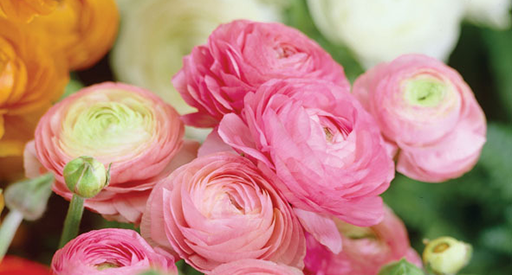
Planting bulbs in autumn is a great way to jump-start your spring garden. By spring you’ll be rewarded with some beautiful and fragrant floral displays. Bulbs come in a wide range of stunning varieties and colours, so why not have some fun and try some new and interesting combinations!
Bulb varieties to look out for
Tulips
Peony Angelique, Peony Carnival De Nice, Peony Pastels, Single Clearwater, Single Pink Diamond, Single Grand Style, Single Purple Prince, Single Spring Green, Single - White Dream, Single Dow Jones, Negrita Parro and NEW season Synfonie.
Daffodils
King Alfred, Carlton, Corbiere, Early Beauty, Ice Follies, Double Double Tahiti, Double Pink Perfection, British Gamble, Love Day, Mount Hood, Mini Bell song, Mini Pipet, Romy and Czardas.
Freesia
Singles Blue Haven, Singles Montana, Singles Rose Marie, Singles Stockholm, Double Blue Navy and Annecy.
Hyancinths
China Pink, Blue Eyes, Pacific Ocean, Fondant, Apricot Passion, Yellowstone, Woodstock, Royal Navy, Double Red Diamond, Double Spring Beauty, Carnegie, Delft Blue & Pink Surprise.
Tips for choosing varieties
- Don’t forget the classics! You can’t go past older varieties such as King Alfred with their big yellow trumpets.
- Bulbs that love the sun - daffodils, tulips, hyacinths, lilies, gladiolus
- Bulbs that love the shade - snowdrop, bluebells, snowflake, trillium
- Purple Early Giant Muscan paired with stunning white Virgo Nerines and Fiesta Mahogany Ranunculus with Giant White Ixias. Check out what’s available at your local garden centre.
- For an extra special display look for double flower varieties.
Bulb planting inspiration
- Whether you prefer planting in pots and containers or bold masses in your garden beds, there are so many ways to plant flowering bulbs to ensure your garden will make a stunning statement in spring.
- Plant groups of bulbs such as daffodils, tulips or alliums among perennials shrubs, or rocks to create bright pops of colour within the greenery.
- Stagger planting your bulbs to create continuous colour. By planting your bulbs in groups a few weeks apart from each other, you’ll be rewarded with an extended spring bulb display as new blooms emerge when old ones die off.
- Create ‘garden bouquets’ either in the ground or in pots and containers by layering smaller bulbs over top of bigger bulbs. For example, plant daffodils or tulips 15cm deep, then plant grape hyacinths 7cm on top of them, or mix together your favourites and you’ll have your own spring bouquets ready to pick or simply admire.
- Pick a mixture of bulbs within a colour scheme that will look great in your garden and compliment your other plants. We love the colour combination of purple and white, or opt for a mix of bright yellow, red and orange to give your garden a pop of colour. Planting different types of bulbs varieties together can achieve interesting height and colour combinations for added visual impact.
Try something different
- If planting in pots, plant the shorter bulb variety along the outer ring of the container with the taller bulb variety in the middle.
- Plant bulbs with other flowers for an extra exciting show – try a few tulips with pansies or violas, or try anemone or ranunculus with polyanthus. You could also plant bulbs with winter lettuce, cabbage and spinach.
- Naturalise bulbs – scatter them throughout your garden beds and plant them where they land for a surprise show in spring!
- Instead of planting in pots, plant up some hanging baskets with bulbs for a stylish show around your entrance way and veranda.
- Try a country cottage look – upcycle old wooden boxes or terracotta pots and plant with bulbs.
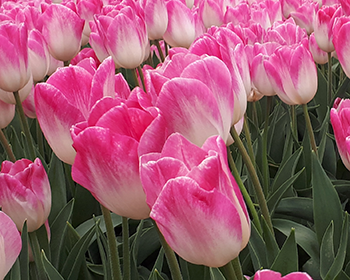
Tulip Sinfonie
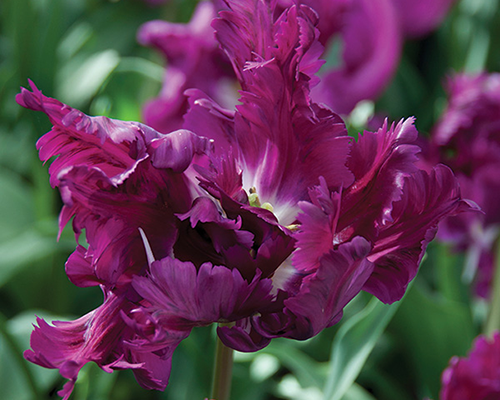
Negrita Parrot
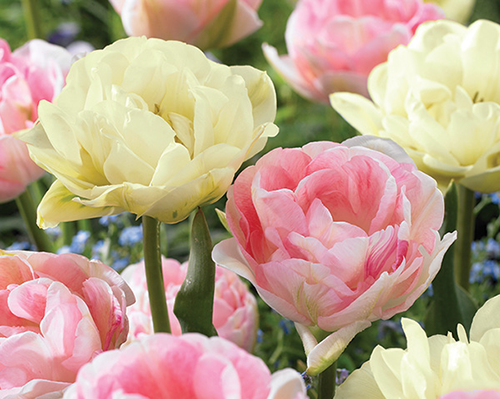
Pastel Peony
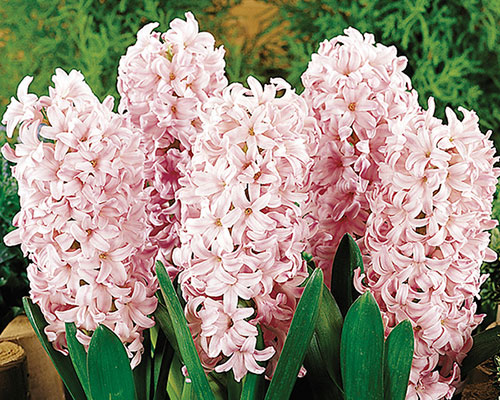
Hyacinth Pink Surprise
Post a comment
Choosing the perfect bulb variety Comments
I would love to know the conditions different bulbs like as I have a shady spot I would like to add some bulbs
Lydia
Hi Lydia, bulbs that enjoy shady spots include ranunculus, anemome, daffodil, freesia, tulips, muscari, scilla and snowdrops. Happy bulb growing!
Tui Team
I currently have begonias, coleus, cyclamen and many other plants but I will put the spring bulbs among them.
Lydia Parsons
Hi there, do l lift my gladiolus and hippeastrum bulbs and replant them in spring?
Diana
Hi Diana, for gladioli as long as you are in a frost free area then you don't need to lift in winter. If you have heavy frosts, lift and store in a cool dry place until August and replant. Also, it is good to know where they are in the garden so that you don’t dig them up when cultivating the garden. Hippeastrum are okay left in the ground over winter as long as frosts are not too hard, but they are also a favourite food of slugs and snails so will benefit being lifted and stored then replanted in August, if slugs and snails are a problem. They will start flowering in October. If clumps get too big then it is a good idea to lift them and divide them up and replant. If storing, bulbs should be stored in a cool dry place, not in plastic bags but paper bags or on a seedling tray is best.
Tui Team
My daughter had huge lillies last season. She put banana skins in beside them
Diana
Hi Diana, that is very interesting to hear. Thank you for sharing this tip!
Tui Team
I want to plant bulbs, especially tulips en masse but a friend told me that I'll have to dig them up each year and put them in my freezer for a few weeks. Is this true? I live in Lower Hutt so we don't get many frosts but we do get some. Thanks.
Carol Karl
Hi Carol, tulips are a cold climate bulb that come into store already chilled, ready to plant. If you're expecting another good display the following season the tulips will need a chilling period or 6-8 weeks. They don’t need to go in the freezer, the fridge is fine, just don’t put apples in the same bin as the tulips. Another thing that can be done is to plant the tulips a little deeper than the rule of thumb which is plant to a depth of twice the diameter of the bulb. Plant tulips to a depth of four times the diameter.
Tui Team
What an inspiring page; fantastic!
Kerry Kleinsman